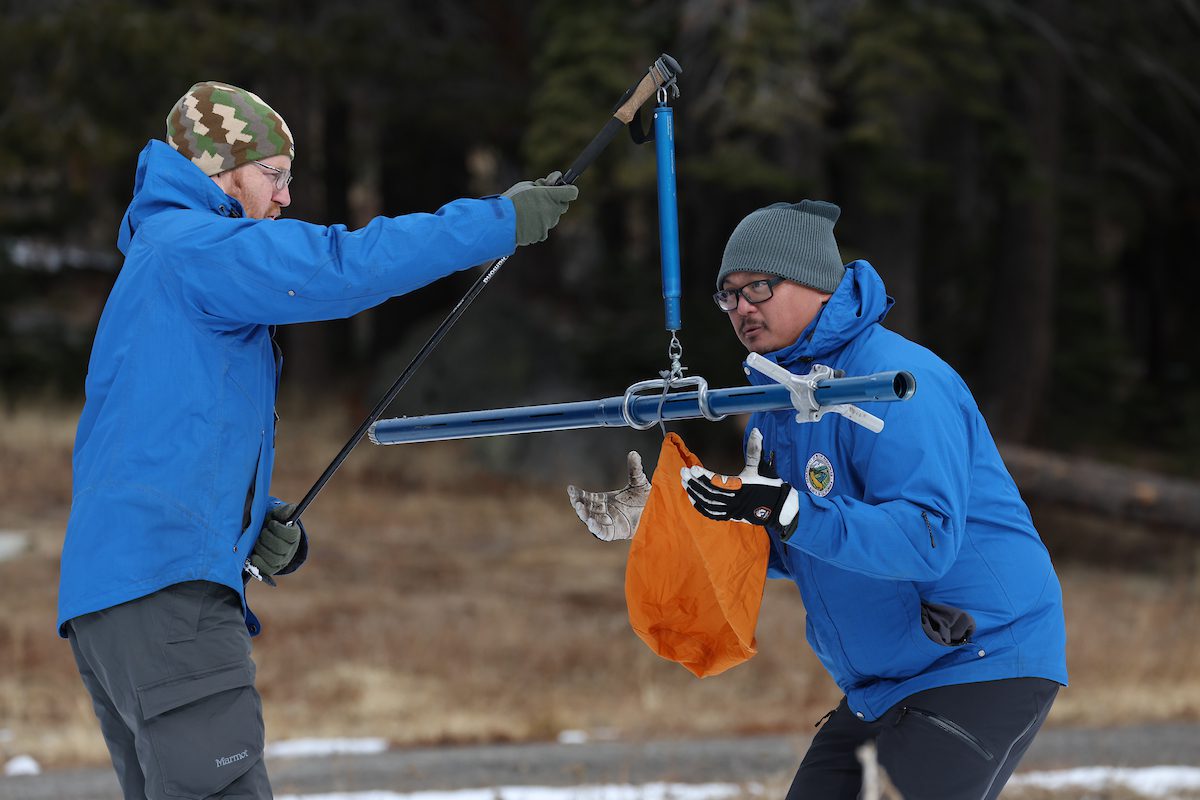January 3, 2024 — Yesterday, the California Department of Water Resources (DWR) conducted their first snow survey of the season at Phillips Station. Staff found 7.5 inches of snow depth and a snow water equivalent of 3 inches, which is just 30 percent of the average for that spot. This “snow water equivalent” is crucial as it reveals how much water is in the snowpack, which is a big part of California’s water supply. Right now, the snowpack across the state is only 25 percent of what it usually is at this time of year.
conducted their first snow survey of the season at Phillips Station. Staff found 7.5 inches of snow depth and a snow water equivalent of 3 inches, which is just 30 percent of the average for that spot. This “snow water equivalent” is crucial as it reveals how much water is in the snowpack, which is a big part of California’s water supply. Right now, the snowpack across the state is only 25 percent of what it usually is at this time of year.
Last Year’s Extremes and This Year’s Uncertainty.
Despite a massive snowpack last year, this year began quite dry. There have been a few storms lately, but they’ve only given a small boost to the snowpack. California’s reservoirs are sitting above average and strong El Niño conditions are happening in the Pacific Ocean. But what the rest of the winter will bring is still a big question mark.
DWR Director Karla Nemeth saidd, “California saw firsthand last year how historic drought conditions can quickly give way to unprecedented, dangerous flooding.” She emphasized that even though El Niño might not guarantee a wet year, California is getting ready for the possibility of extreme storms while also preparing for future droughts.
Statewide Snowpack and Water Conservation.
Statewide electronic readings show that the snowpack’s snow water equivalent is 2.5 inches or 25 percent of the average. Sean de Guzman from DWR noted, “While we are glad the recent storms brought a small boost to the snowpack, the dry fall and below-average conditions today show how fast water conditions can change.” He highlighted the importance for Californians to keep an eye on forecasts and conserve water, no matter the weather.
Preparing for Floods.
After experiencing a sudden switch from extreme drought to flooding last year, it’s clear Californians need to be ready for flood risks. DWR is working with various partners to provide resources and training for flood preparation across the state. They have more flood fight materials ready this winter, including over 2.2 million additional sandbags. They’ve also held meetings and trainings with emergency response agencies to prepare for potential local emergencies.
DWR advises Californians to know their flood risk, be prepared with an emergency kit and plan, and take action by following local authorities’ advice during emergencies. Never drive through flooded roadways.
Previous Snowpack Conditions.
Last January, the Phillips location had a snowpack 177 percent of the average, followed by severe storms that caused widespread flooding. To manage these situations, over 1.9 million sandbags were deployed, and agencies worked together to protect communities from snowmelt-driven flooding.
On average, the Sierra snowpack supplies about 30 percent of California’s water needs. Its natural ability to store water is why the Sierra snowpack is often referred to as California’s “frozen reservoir.” Due to last year’s above average conditions and historic snowpack, a total of 3.5 million acre-feet of water was captured in State Water Project (SWP) reservoirs. Lake Oroville, the SWP’s largest reservoir, is currently at 130 percent of average to date and state water managers are prepared to capture and store as much water as possible.
Next Report.
DWR’s next survey is planned for February 1.
Image:
DWR staff conduct the first media snow survey of the 2024 season at Phillips Station in the Sierra Nevada on Jan. 2, 2024, via the California Department of Water Resources’ news release.

